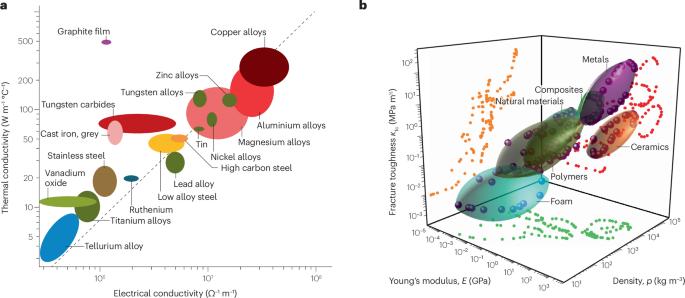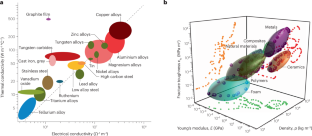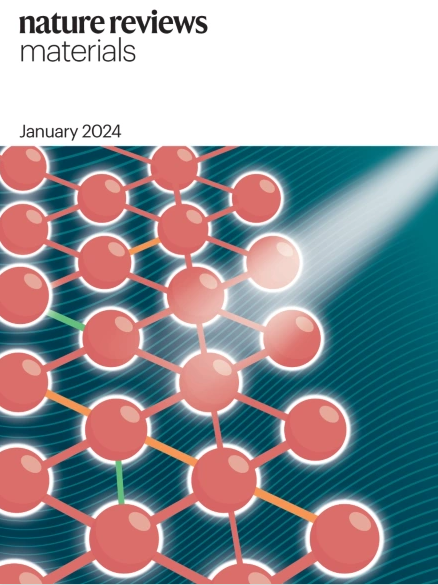Quantitative biomimetics of high-performance materials
IF 86.2
1区 材料科学
Q1 MATERIALS SCIENCE, MULTIDISCIPLINARY
引用次数: 0
Abstract
The ongoing need for materials with difficult-to-combine properties has driven dramatic advancements in the field of bioinspired and biomimetic (nano)structures. These materials blend order and disorder, making their structures difficult to describe and, thus, reproduce. Their practical design involves the approximate replication of geometries found in biological tissues, aiming to achieve desired functionalities using a diverse array of human-made molecular and nanoscale components. Although this approach led to the successful development of numerous high-performance nanocomposites, the rapidly growing demand for better and better materials in energy, water, health and other technologies necessitates an accelerated design process, multidimensional property assessment and, thus, a shift towards quantitative biomimetics. In this Perspective, we approach the design of complex bioinspired materials from the standpoint of interfacial chemistry and physics. Analysing typical examples of biological composites and their successful replicates, we propose a framework based on Taylor series and property differentials that quantifies their interdependence. Five specific cases are considered for limiting their cross-products in Taylor expansions, including discontinuities of differentials at interfaces and multiple scales of organization. We also discuss how the integration of theory, simulations and machine learning is central to the development of quantitative biomimetics. This approach will enable the n-dimensional optimization of contrarian properties by leveraging materials with a high volumetric density of interfaces, graph theoretical description of complex structures and hierarchical multiscale architectures. The need for materials with hard-to-combine properties has spurred advancements in bioinspired nanostructures. They are difficult to replicate because they combine order and disorder. Their properties are also difficult to predict because of abundance of interfaces. This Perspective suggests using a quantitative framework based on interface chemistry and Taylor series to accelerate materials design, integrating theory, simulations and machine learning for optimizing materials with multiscale architectures.


高性能材料的定量仿生
对难以组合性能的材料的持续需求推动了生物灵感和仿生(纳米)结构领域的巨大进步。这些材料混合了有序和无序,使得它们的结构难以描述,因此难以复制。他们的实际设计涉及生物组织中几何形状的近似复制,旨在使用各种人造分子和纳米级组件实现所需的功能。尽管这种方法成功地开发了许多高性能纳米复合材料,但能源、水、健康和其他技术领域对越来越好的材料的需求迅速增长,需要加速设计过程、多维特性评估,从而转向定量仿生学。从这个角度来看,我们从界面化学和物理的角度来设计复杂的生物启发材料。通过分析生物复合材料及其成功复制的典型例子,我们提出了一个基于泰勒级数和性质微分的框架,以量化它们的相互依赖性。考虑了在泰勒展开中限制它们的交叉积的五种具体情况,包括界面处的微分不连续和组织的多尺度。我们还讨论了理论、模拟和机器学习的整合如何成为定量仿生学发展的核心。这种方法将通过利用具有高体积密度界面的材料、复杂结构的图形理论描述和分层多尺度架构,实现反向性能的n维优化。
本文章由计算机程序翻译,如有差异,请以英文原文为准。
求助全文
约1分钟内获得全文
求助全文
来源期刊

Nature Reviews Materials
Materials Science-Biomaterials
CiteScore
119.40
自引率
0.40%
发文量
107
期刊介绍:
Nature Reviews Materials is an online-only journal that is published weekly. It covers a wide range of scientific disciplines within materials science. The journal includes Reviews, Perspectives, and Comments.
Nature Reviews Materials focuses on various aspects of materials science, including the making, measuring, modelling, and manufacturing of materials. It examines the entire process of materials science, from laboratory discovery to the development of functional devices.
 求助内容:
求助内容: 应助结果提醒方式:
应助结果提醒方式:


